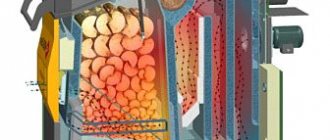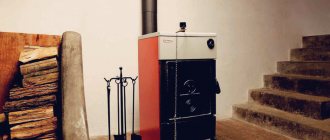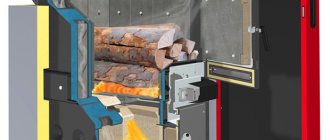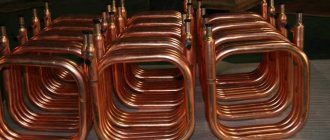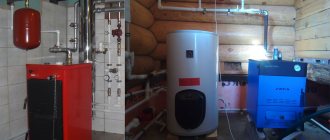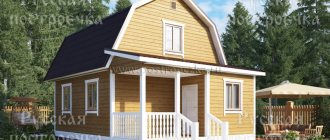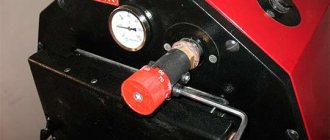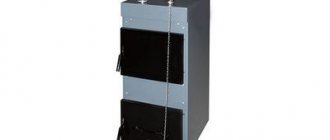A classic heating scheme with one heat generator is well known to every home owner. However, by combining a gas and electric boiler in one system, a much greater practical effect can be achieved. They say that such a connection is much more economical than usual. Sounds tempting, doesn't it?
With logical reasoning, doubts arise: how will electricity help save the budget, because its cost is much higher than gas? And why do this at all from the point of view of the expediency of increasing the power of the units? Isn't it easier to buy just one efficient boiler?
In fact, the project of such a combination is quite justified. We will tell you in detail how to assemble heating with electric and gas appliances. You will learn about the structure of this system and its feasibility. We will help you draw up a diagram and not miss the important nuances of arranging a combined heating line.
Why install two boilers at once?
The role of the leader in the "gas + electro" connection is usually performed by a gas unit. This is logical if only because of the lower cost of the fuel used in the supply. But the word “save” was mentioned above, and it is not clear what the cost reduction is.
The fact is that in many regions the tariff for electricity is based on the day / night system. In some cases, it turns out at least quite a bit, but it is more economical than paying for gas. The difference is doubtful, however, it can serve as an additional reason for the accumulation of arguments for the double link.
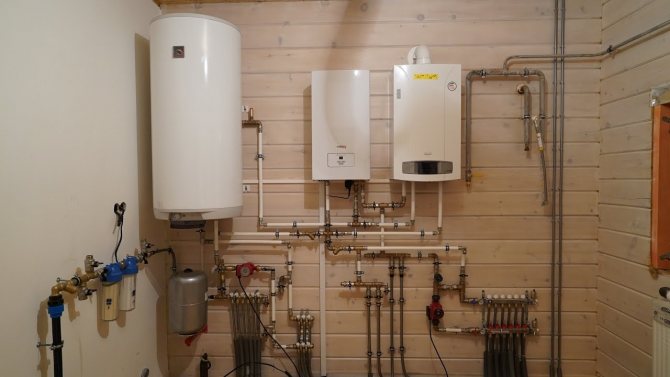
The installation of an electric boiler in conjunction with a gas boiler can play a backup or additional role in the overall organization of heat supply. When choosing the power of the equipment, you should focus on the purpose of its use.
Of course, this is not such a good reason to immediately design a heating system with 2 boilers. The main advantages of the circuit are power amplification and uninterrupted operation. When choosing and installing a heat generator, it is necessary to clearly understand that any device and fuel supply will not last forever.
They turn off the power supply, they can cut off the gas main due to a leak, the voltage in the network will drop, or a banal breakdown of the unit itself will occur. In this case, you run the risk of being left without heat and hot water during the cold season.


To ensure the uninterrupted operation of heating equipment or increase the capacity of the system as a whole, it is possible to allow 2 boilers operating on different fuels to operate at once
This is called connecting an additional (for power amplification) or backup power supply, depending on the goals and situations that arise.
Characteristics of solid fuel boilers
Very often, solid fuel boilers are installed in country houses where there is no gas supply nearby. The source of energy in such devices is firewood, coal or compressed wood waste.
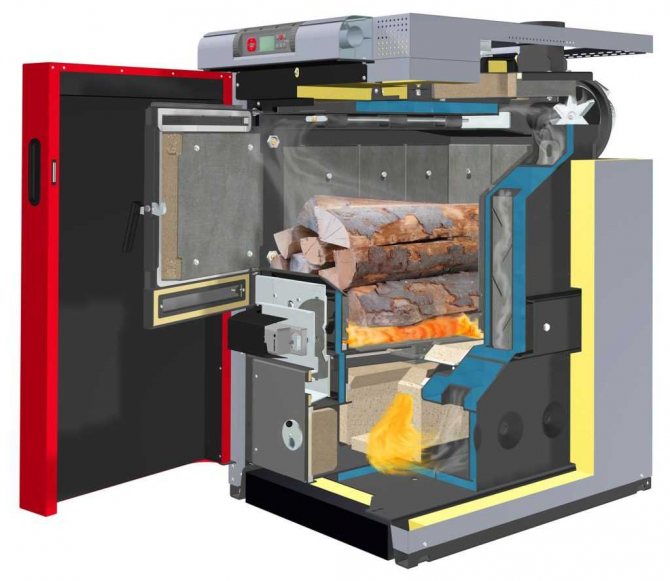

Solid fuel boilers can operate on coal, wood or pellets
A solid fuel heating system has many advantages:
- savings - not only firewood can be used as fuel, but also cheap wood waste - shavings, sawdust,
- safety - the heating process does not require the use of electricity,
- environmental friendliness - the coefficient of fuel combustion in the boiler is more than eighty percent, which makes it possible to reduce the formation of ash and soot to a minimum,
- durability - many boilers have a service life of over fifteen years.The use of solid fuel heating units has its drawbacks:
- the installation of the boiler includes the construction of a high draft chimney,
- the obligatory presence of a separate room for the heater,
- the need for regular fuel loading,
- the need for constant cleaning of the boiler.
A wide range of pricing policy allows you to select solid fuel boilers for any user. You can purchase high quality heating devices at an affordable price on the website https://fornaks.ru/catalog/section/kotly-tverdotoplivnye/.
| Characteristic indicators | Gas boiler | Solid fuel boiler |
| Efficiency level | High - over 90% | Medium - 70% to 90% |
| Temperature control | The equipment is automated as much as possible | Does not have devices to maintain temperature |
| Service | The boiler is cleaned once a year. | It is necessary to regularly clean the chimney and firebox from ash, tar and soot. |
| Security | Powered by electricity, potential for gas leaks, increased CO emissions during combustion | Low CO emission, rugged design, works offline |
| Additional functions | Double-circuit boilers are produced, which provide heating of water regardless of the operation of the entire heating system | Some boiler models require additional installation of tanks for heating water |
| Fuel supply | Gas flows to the boiler automatically | Constant filling of fuel into the furnace is required - from two to five loads per day |
Many gas boilers can be installed in the kitchen. Solid fuel heaters require separate auxiliary rooms. You also need a place to store firewood, coal or pellets.
Shared connectivity
It is not so easy to design a conventional gas-fired heating system. That is, it is easy to create a working scheme, but it is problematic to get it approved. The situation with electric boilers is less deplorable in terms of costs, time and problems with obtaining documents approving the procedure.
And here is the union of 2 multi-fuel units. It would seem that you will not get around problems and you will go to the authorities literally for years, for permits. But this is not the case.
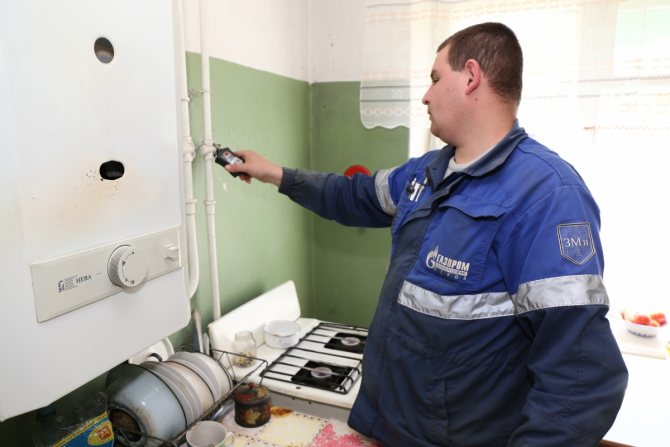

There are no restrictions on the joint use of a gas and an electric boiler in the regulatory documents. However, it is still necessary to agree on such a project in the gas service and obtain permission if you exceed the established limit in the total capacity of the equipment for the use of electricity.
In fact, building codes are quite supportive of such schemes. To be more precise, there are no prohibitions.
Energy and fuel consumption meters are different. The consumption of resources is not exceeded, an explosive situation is not provoked - install the boilers, observing the standard standards, installation instructions for each. There shouldn't be any problems.
We remind you that the installation of gas boilers should be carried out in accordance with SP 402.1325800.2018 (moreover, this document is mandatory, not advisory).
How to connect 2 boilers in the system?
You can't just take and randomly connect 2 devices, the system will either not work, or it will work incorrectly. It is necessary to use carefully designed, competently designed from an engineering point of view.
There are two main connection schemes, these are:
- Consistentwhen all elements are connected to each other without additional nodes. In this case, one device will heat the coolant, and the second will heat it up;
- Parallel, in which the devices included in the circuit have 2 connection nodes and the boilers work independently of each other.
The sequential system is more suitable for low-power boiler installations and is rarely used.


Serial connection is considered impractical if only because it is impossible to remove one boiler without affecting the second. In fact, the problem is solved by installing bypasses and shut-off valves, but still parallel connection is advantageous.
Meanwhile, parallel connection in a single system of gas and electric boilers has a lot of advantages. Therefore, it is it that is used most often, despite the fact that this arrangement requires more materials and is considered more expensive.
In such a device, you can turn off one of the devices at any time and even remove it for replacement or repair, the second will continue to operate normally.
Parallel Features
Let's take a closer look at what a standard scheme for parallel connection of gas and electric boilers looks like:
- Coolant supply circuits are connected to each unit. They join a common line.
- It is imperative in this case that there are safety groups and shut-off valves.
- The other line is connected to the loops of the return lines, also equipped with shut-off valves.
- A circulation pump is installed on the return line (or at the supply), in front of the unit for matching the piping circuits.
- The mains of both heating units are connected to the collectors.
- An expansion tank is installed on one of the distribution manifolds. A make-up circuit is also connected to its pipe, equipped with a check valve and shut-off valves.
- From the distribution manifolds there are main branches to the underfloor heating, radiators, a boiler, circulation pumps and valves for draining the coolant from the system are installed on each.
This is not a schematic diagram, but only its main features. In general terms, it gives an idea of how best to connect an additional electric boiler to the main gas boiler. The assembly option can be complicated and improved, for example, with an automation system and a servo drive.
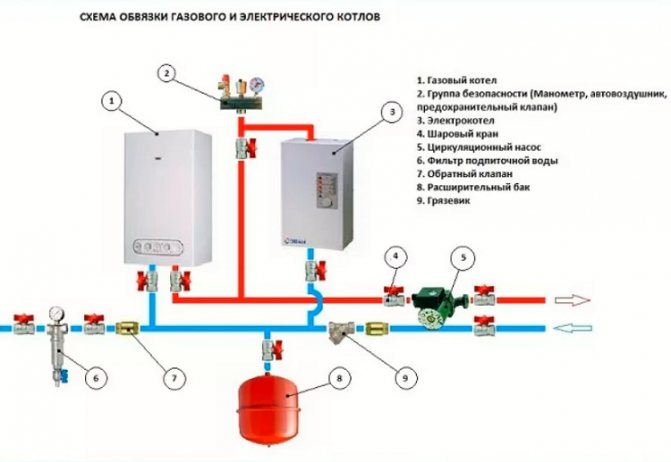

With a parallel connection, you can also install a hydraulic arrow and an automation unit, but before that, carefully consider this solution, their installation is not always advisable
Using the heat storage
The scheme for connecting a gas and solid fuel boiler into one system looks like this: a gas boiler, a heat accumulator and heating devices are combined into a common closed circuit, and the solid fuel unit transfers all the energy to the heat accumulator, from which the coolant is already supplied to the closed system.
Such a network can operate in several modes:
- from two boilers at the same time;
- only from gas;
- only from solid fuel through a heat accumulator;
- from solid fuel, bypassing the heat accumulator, with the gas boiler turned off.
How to connect two boilers to one heating system according to this scheme. Cut-off valves are installed on the nozzles of the wood boiler. An open expansion tank is installed at the highest point of this circuit, connected to the boiler supply pipe. Next, the taps are cut into the supply / return pipes of the heat accumulator and connected with pipes to the rest of the circuit.
So that the boiler can be used without a heat accumulator, two tubes are cut in near the shut-off valves of the latter and cut-off valves are installed on them. The supply and return pipes are connected by a bypass: they are attached to the supply jumper with a fitting or welding, to the reverse - through a three-way valve.
Between the three-way valve and the boiler, a circulation pump with a filter is built into the circuit. It is recommended to make a bypass in this area too, around the pump: if the electricity is cut off, the coolant will be able to move due to natural circulation.
The installation of the "gas" circuit is carried out as in the usual scheme with a heat accumulator. An expansion tank with a safety valve is usually already included in the boiler design. A pipe is connected to the supply pipe through a shut-off valve, which leads to the heating devices. The return is also connected to the boiler through a shut-off valve. The pump is installed on the return pipe.
Jumpers are connected from both pipes to the heat accumulator: one - in front of the circulation pump, the second - in front of the heating devices. In the same places, pipes are connected that were installed in the first circuit (for the movement of the coolant from the boiler TD without a heat accumulator). All new connections are equipped with valves to shut off the flow.
Manual start / automatic control options
The management of the boiler redundancy system or the shutdown of failed ones can be carried out manually or in automatic mode. Leaving the system running with one boiler turned off is impractical, as the water will continue to circulate.
Imagine what will happen when the cooled return flow goes in the opposite direction and starts mixing with the supply, cooling the coolant and forcing the pump to work in vain.
If for some reason you do not want to equip boilers with complex devices, you will start the unit yourself. That is, everything is standard: you need to turn on the device - turn all the necessary valves and turn it on. When disconnecting, proceed in the reverse order.
If you want the backup equipment to be started in automatic mode, the system is equipped with automation, thermostats, indoor and outdoor air temperature sensors, coolant temperature sensors, and servo drives.
In the schematic diagram of the automatic backup start of the heating unit, all stopcocks must be in the open position. According to the counter scheme, the system is equipped with check valves in order to avoid parasitic circulation of the coolant through the boiler that is not working at a certain time.
However, despite the convenience, the system can cause certain problems, for example, the hydraulic resistance of the check valves, which causes stress on the pumps, contamination and wear of the devices themselves.
To automatically turn on the heating boiler, the system is equipped with a thermostat that sends commands to the control unit, depending on the temperature conditions in the house. The switch-on time for night standby use is set on a timer. The circulation pump is turned off by a magnetic starter.
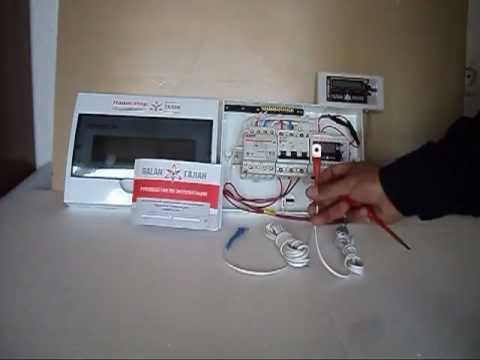

Automation for electric boilers can be built-in, home-made or purchased separately. However, you should not install it with your own hands only on advice from the Internet, without having the proper skills. Invite the wizard for installation and correct system settings
When choosing a control that will be equipped with an electric boiler installed in parallel with a gas boiler, you should opt for automation, if:
- The reserve boiler is turned on at night, when it is inconvenient to start manually.
- In case of long departures from home during the heating season.
- If the gas boiler is unreliable.
In other cases, it is quite possible to use the simplest manual scheme.
Dual fuel heating boilers
In an effort to obtain high performance of the heating system, to avoid interruptions in the voltage in the electrical network and in the operation of the unit, many turn to the installation of dual-fuel boilers. Despite their large size and solid weight, combi boilers function well due to the use of different types of fuel and minimal maintenance costs.
The scheme, in which gas and firewood are used to heat the coolant, is considered the most popular and convenient, since it works with an open heating system.If you want to install a closed system, then it is recommended to put an additional circuit for the heating system in the tank of a universal boiler.
Related article: DIY curved plasterboard ceilings: room for creative imagination!
Manufacturers of heating boilers produce several types of dual-fuel combined boilers:
- gas with liquid fuel;
- solid fuel gas;
- solid fuel with electricity.
Solid fuel boiler and electricity
One of the financially sound and functionally convenient combined boilers is considered to be a solid fuel boiler with an electric heater that allows you to control and regulate the temperature in the house. Thanks to the use of heating elements, such boilers have a number of advantages and positive characteristics. Let us consider in more detail the principle of operation of the heating system of a combined boiler.
The combi boiler runs on only one type of solid fuel. The water in the circuit begins to heat up when the loaded raw material burns. As soon as the fuel burns out, the thermostat is triggered and the electric heaters are turned off, the water begins to cool down. As a result of the temperature decrease, the heating element is automatically turned on to heat the water. The heating and cooling process is cyclical, so a comfortable temperature is constantly maintained in the house.
To optimize the operation of the circuits, manufacturers suggest using heat accumulators in heating systems. Outwardly, they are a container with a volume of 1.5 to 2 cubic meters. Principle of operation: the pipes of the circuit pass through the accumulator tank and heat the available water. After the end of the operation of the boiler, hot water slowly gives up heat energy to the heating system. Thanks to the batteries, the temperature regime is maintained stably for a long time.
Summing up, it can be noted that to reduce the cost of heating a private house, to ensure uninterrupted and stable operation of the heating system, installing a dual-fuel boiler is the best and proven option.
Hydro arrow in the system of parallel connection
Hydrostrelka is a device that provides hydraulic decoupling of flows supplied to separate circuits of the heating system. It plays the role of a buffer tank that receives the flow of the heat carrier heated by boilers and distributes it to consumers in a branched system.
Often the volume of the coolant required for them differs, the speed of movement of heated water and its pressure differ. And in the situation under consideration, the movement of heated water from each of the boilers also stimulates its own circulation pump.
When a powerful pump is turned on, an uneven distribution of the coolant along the circuits occurs. So, the task of the hydraulic arrow is to equalize this pressure. Due to the fact that there is practically no hydraulic resistance inside it, it will freely accept and distribute the coolant flows from both boilers.
Let's figure out whether it is really necessary in a parallel system for connecting 2 boilers, especially since if the hydraulic separator is bought and installed with the help of a wizard, and not with our own hands, the total amount will be unpleasantly surprising.
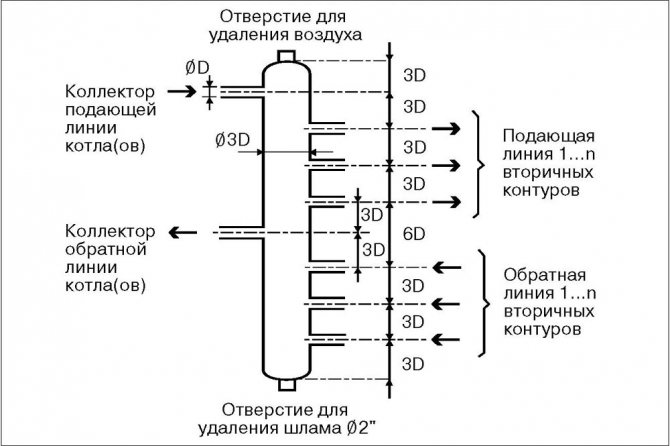

The device is a piece of pipe with nozzles, hollow or with filter nets for removing bubbles and screening out impurities. It can be installed in any position, but more often vertically, equipping the top with an air vent and a shut-off valve for cleaning from below. A hydraulic arrow is installed between the boiler and heating circuits
In the classic connection diagram, a hydraulic separator is usually not required, since a conflict of 2-3 pumps can be leveled without this device. Accordingly, if you have 2 boilers used exclusively as a backup and there are no more than 3-4 pumps in the system, there is no special need for it.
But if there are more circuits with forced circulation or heating boilers operate simultaneously at power, it is best to install this device. Again, it is not known whether you will use the second boiler permanently or only in standby mode, so it's better to play it safe.
Parallel and serial connection of boilers - reviews
And here is a couple of reviews from users about the parallel and serial connection of heat generators in the heating system:
Anton Krivozvantsev, Khabarovsk Territory: I have it, it is the main one and heats the entire heating system. I am satisfied with Rusnit, a normal boiler, for 4 years of operation 1 heating element burned out, I changed it myself, there are all business for 30 minutes with a smoke break.
A KChM-5 boiler is connected to it, into which I built it. The steam locomotive turned out to be a noble one, heats well and, most importantly, the automation of the process is almost the same as that of an automatic pellet boiler.
These 2 boilers work in pairs for me, one after the other. The water that Rusnit did not heat is followed by KChM-5 and the pellet burner Pelletron-15. The system turned out as it should be.
There is one more review, now about the parallel connection of 2 boilers in the boiler room:
Evgeny Skomorokhov, Moscow: My main boiler is, it runs mainly on wood. My reserve boiler is the most common DON, which is included in the system with the first in parallel. It is rarely kindled, and indeed, I inherited it along with the house I bought.
But once or twice a year, in January, the old DON has to be flooded, when the water in the system almost boils, but the house is still chilly. This is all due to poor insulation, I have not yet finished insulating the walls, and it would be good to insulate the attic ceilings better.
When the insulation is completed, I think I will not heat the old DON boiler at all, but I will leave it as a backup.
If you have any comments on this material, please write them in the comments form below.
More on this topic on our website:
- The words "single-circuit floor gas heating boilers" are unfamiliar to an inexperienced person and sound outrageously incomprehensible. Meanwhile, intensive suburban construction popularizes ...
- The Buderus Logano G-125 liquid fuel boilers are available in three capacities - 25, 32 and 40 kilowatts. Their main ...
- The principle of operation of any gas boiler is that as a result of the combustion of gas fuel, thermal energy is generated, which is transferred to the coolant ...
- Floor heating water convectors evenly and in a short period of time heat a room of any size. From the point of view of interior aesthetics, such ...
Series connection of boilers more economically feasible
- in this case, the expansion tank and safety group built into the gas boiler are used. At the same time, there are fewer difficulties with the connection and less components, materials and valves are needed, which on average
cheapens
total material costs
40 $ ~ 80 $
.
This option is justified when connecting an electrode boiler (hereinafter EC) paired with a solid fuel boiler (hereinafter TTK) or a gas boiler (hereinafter GK) - boilers with a small displacement (up to 50 liters
) in order to save material on components. The boiler can be connected in series both before and after the gas boiler - it all depends on the physical possibility of the tie-in. It is recommended to cut in the boiler so that the circulation pump is located on the "return" of both one and the second boiler. That is, if a circulating pump is used, which is installed in the main gas pipeline, then it is more logical to organize an EC insert in front of the main gas pipeline (i.e., at the main gas supply).
However, the key point when connecting a boiler to an existing one is that a general connection of the GK and EK system to the safety group and the expansion tank should be implemented.
Conclusions and useful video on the topic
Synchronization of operation and shutdown of boilers in a parallel installation:
Installation of 2 heating boilers, gas and electric, is a wise decision to increase the power of heating equipment, as well as for backup heating of the building. Parallel installation of units is not as difficult as it might seem at first.
The main thing is to correctly select the arrangement scheme and calculate correctly the total or reserve power of the equipment. If you are not confident in your abilities and cannot handle it on your own, it is best to contact a plumber. They will help you quickly and efficiently install the system for a reliable and comfortable heat supply to your home.

